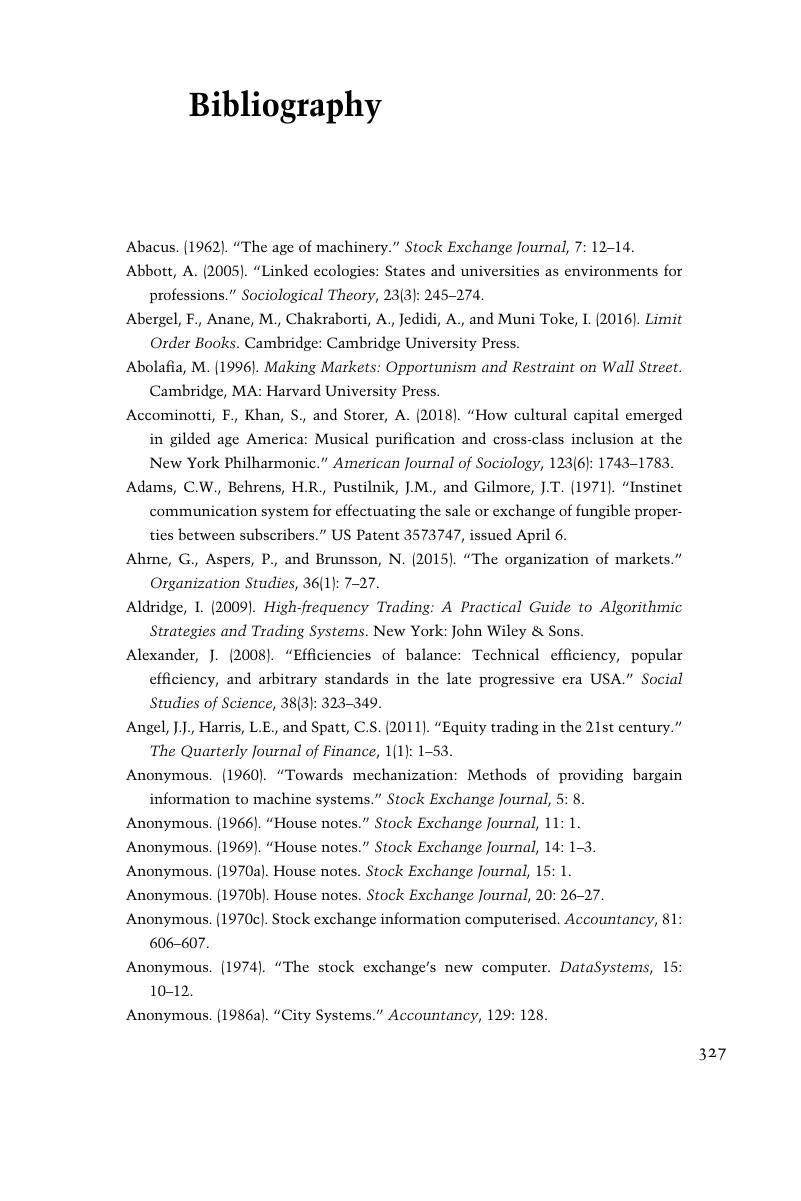Book contents
- Automating Finance
- Automating Finance
- Copyright page
- Dedication
- Contents
- Figures
- Preface
- Acknowledgments
- 1 Markets in Milliseconds
- 2 Infrastructures of Kinship
- 3 The Power of Invisibility
- 4 The Hubris of Platforms
- 5 The Wizards of King Street
- 6 Making Moral Markets
- 7 Rabbits Guarding the Lettuce
- 8 Infrastructures, Kinship, and Queues
- Appendix: A Note on Sources
- Bibliography
- Index
- References
Bibliography
Published online by Cambridge University Press: 03 May 2019
- Automating Finance
- Automating Finance
- Copyright page
- Dedication
- Contents
- Figures
- Preface
- Acknowledgments
- 1 Markets in Milliseconds
- 2 Infrastructures of Kinship
- 3 The Power of Invisibility
- 4 The Hubris of Platforms
- 5 The Wizards of King Street
- 6 Making Moral Markets
- 7 Rabbits Guarding the Lettuce
- 8 Infrastructures, Kinship, and Queues
- Appendix: A Note on Sources
- Bibliography
- Index
- References
Summary

- Type
- Chapter
- Information
- Automating FinanceInfrastructures, Engineers, and the Making of Electronic Markets, pp. 327 - 351Publisher: Cambridge University PressPrint publication year: 2019



